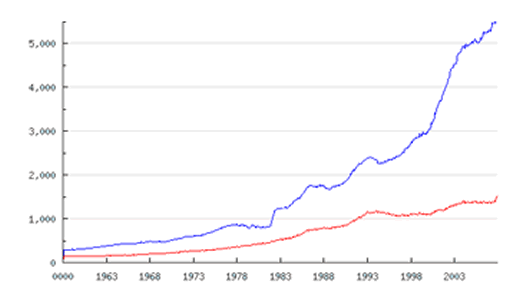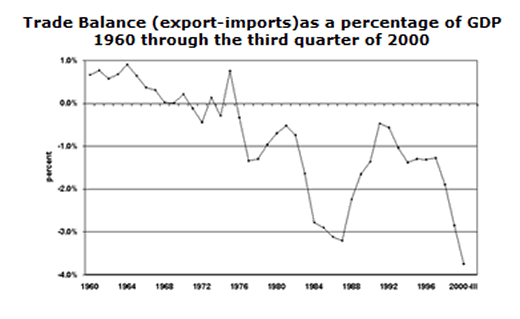President Obama Gets Economic Broadside as Financial Markets Plunge
Economics / Recession 2008 - 2010 Jan 26, 2009 - 06:21 AM GMTBy: Gerard_Jackson

 As Obama assumed the presidency an economic broadside was fired across his bow when the financial markets plunged to new lows. The banks remain in a parlous state and unemployment is still rising. Economist Nouriel Roubini said that if the banking system's losses hit $3.6 trillion -- as expected by quite a few financial observers -- then the "the US banking system is effectively insolvent because it starts with a capital of $1.4 trillion."
As Obama assumed the presidency an economic broadside was fired across his bow when the financial markets plunged to new lows. The banks remain in a parlous state and unemployment is still rising. Economist Nouriel Roubini said that if the banking system's losses hit $3.6 trillion -- as expected by quite a few financial observers -- then the "the US banking system is effectively insolvent because it starts with a capital of $1.4 trillion."
What Mr Roubini overlooked is that a fractional reserve banking system is always insolvent. This was known from the very beginning of fractional reserve banking. The system rests on the belief that withdrawals will never reach a point where the banks cannot meet them. In other words withdrawals will always be a fraction of the banking system's reserves. In short, banks can never meet their liabilities in full. This is all well and good -- from the banker's position -- unless a financial crisis causes a run.
During the 1920s bank failures averaged about 600 a year1. In 1930 there were 1,350 failures. The following figures are for 1931, 1932, 1933: 2,290, 1,460, 4,000. There were about 29,000 banks in 1929. In 1933 there were less than 15,000. From 1929 to 1932 the money supply plunged by about 33 per cent and wholesale prices by 40 per cent. (During the 1920-21 financial crisis wholesale prices dropped by 45 per cent).
A little history can certainly go along way to putting the present crisis in perspective. Nevertheless, things are still grim. The basic problem is that the monetary lesson of the 1920s and the 1930s was never learnt. Instead the fallacy that the real problem was that the fed failed to halt the deflation by pumping out enough money is now the received wisdom. However, the real lesson is that it was the fed's loose monetary policy during the 1920s that brought on the depression.
It is forever being overlooked that manufacturing -- a leading indicator of recession -- was already contracting by at least July 1929. During the extremely severe 1920-21 crisis the US experienced the most rapid deflation in its history with wholesale pricing diving by 45 per cent and physical production falling from 124.5 in 1920 to 103.9 in 1921. By late 1921 the economy was on the road to recovery. So why didn't this process repeat itself during the 1930s? Because for the first time in its history politicians decided that they would bring about recovery and prosperity. The result was the Great Depression.
Although the banking situation is not as dire as 1930 things are still pretty bad. Krugman, for instance, seems to be on the verge of panic, stating that the "recent economic numbers have been terrifying". Interesting enough he notes that "Manufacturing, in particular, is plunging everywhere" (Paul Krugman, Fighting Off Depression , The New Times , 4 January 2009).
But the Austrian school is forever pointing out that a chief characteristic of the so-called trade cycle is that manufacturing -- particularly the capital goods industries -- is always the first to be hit. This needs to be stressed because Krugman is complaining that "consumers aren't spending". But in this kind of situation, raising consumer spending would prolong the recession, not shorten it. And there is no point in whining about business not spending when Obama has added considerably to economic uncertainty with his statements about taxes and government spending.
Krugman referred -- as have many others -- to Friedman's opinion that the Fed could have stopped "the Depression in its tracks simply by providing banks with more liquidity". He then rightly observes that it doesn't appear that simple -- which it most certainly isn't -- by pointing out that the
Fed has been supplying liquidity like an engine crew trying to put out a five-alarm fire, and the money supply has been rising rapidly. Yet credit remains scarce, and the economy is still in free fall.
In Krugman's tidy economic universe -- which exists only in theory -- this shouldn't be happening. Therefore his solution is to urge Obama to spend and spend. What the likes of Krugman ignore is that the previous monetary expansion has created enormous financial and physical imbalances in the economy that need to be liquidated if there is to be a sustained recovery. Using monetary expansion to maintain the existence of these imbalances (malinvestments) will create an enormous drag on the economy.
Austrians have tried to get across that because capital is a heterogeneous structure and not a homogeneous self-perpetuating fund repetitive attempts to rescue an economy from the trade cycle by continuing to expand the money supply must result in ever increasing amounts of money being injected into the economy because each recession will require a greater amount of monetary expansion to overcome the malinvestments. If this is correct then monetary figures will confirm it, which is exactly what the following chart does.

The Ludwig von Mises Institute . The upper line represents the Austrian Money Supply (AMS) or the Rothbard Money Supply and the True Money Supply, while the lower line represents M1. The benefits of AMS over conventional measures calculated by the Federal Reserve are that it counts only immediately available money for exchange and does not double count. It consists of the following: Currency Component of M1, Total Checkable Deposits, Savings Deposits, U.S. Government Demand Deposits and Note Balances, Demand Deposits Due to Foreign Commercial Banks, and Demand Deposits Due to Foreign Official Institutions. [Savings accounts are a matter of dispute. I am inclined to omit them on the grounds that they are almost immediately loaned out and do not add to the money supply in the same that checkable deposits do. In other words, they are straightforward credit transactions].
We can see that while it took from 1958 to 1982 -- 24 years -- for the money supply to double it doubled again from 1998 to 2008, a period of 10 years. The result has to be a severe fall in purchasing power and recurring current account problems. Using the Fed's inflation calculator we find that an item that cost a dollar in 1958 would cost $7.27 in 2008, a 627.4 per cent increase which amounts a fall in purchasing power of about 76 per cent. Once the fed has to keep accelerating monetary expansion to stimulate output we should expect current account deficit problems to develop with the trade balance continually blowing out. This is what the chart below indicates2.
Trade Balance (export-imports)as a percentage of GDP
1960 through the third quarter of 2000

Whichever way we turn we are confronted with bad monetary policy based on the fallacy of the stable price level and the neutrality of money myth. None of this is ever likely to take root with Krugman who thinks we are facing "a second Great Depression". Nor are we going to get an honest debate on this matter from the Obamatised media who will do all in their power to blame everything on Bush. (The other problem is that great majority of journalists are ignorant, politically bigoted and pretty dense with it).
I fear that Obama and his cronies see the present crisis as a heaven sent opportunity to make irreversible changes to the American economy and the body politic. As he himself said: "I won". Indeed he did. However, he seems to have forgotten that America elects presidents not dictators and that is why the Founding Fathers invented a system of checks and balances, the system that the Democratic Party has spent decades trying to dismantle.
But there are economic laws, the defiance of which can have tragic consequences, something to which the Great Depression testifies. Although I do not believe for one moment that America is on the brink of another 1930s economic catastrophe I do believe that Obama's ideologically motivated economic impulses will have serious consequences if they are not checked, which does not appear likely at this stage.
My prediction is that the US faces a massive surge in inflation and a run on the dollar if the fed insists on flooding the banks with monopoly money and underwriting Obama's economic illiteracy with colossal checks funded with credit expansion.
The ancient Greeks had a wonderful word for people like Obama, a word for which there is no English equivalent: Hubris.
1. Most of the banks that failed were small undercapitalized enterprises serving rural areas. I very much doubt that there would have been many failures if congress had not made branch banking illegal. It's a little known fact that during the Great Depression not a single Canadian bank went under. The Canadian system was based on the British bank branching system.
2. I do not want to give the impression that trade deficits are bad in themselves. They are not. In a world governned by sound money principles there would never be any need to worry about current account deficits or the state of the balance of payments. However, in world based on paper money that is moored to nothing but the discretion of central bankers trade deficits can become symptoms of a severe monetary disorder.
By Gerard Jackson
BrookesNews.Com
Gerard Jackson is Brookes' economics editor.
Copyright © 2009 Gerard Jackson
Gerard Jackson Archive |
© 2005-2022 http://www.MarketOracle.co.uk - The Market Oracle is a FREE Daily Financial Markets Analysis & Forecasting online publication.


